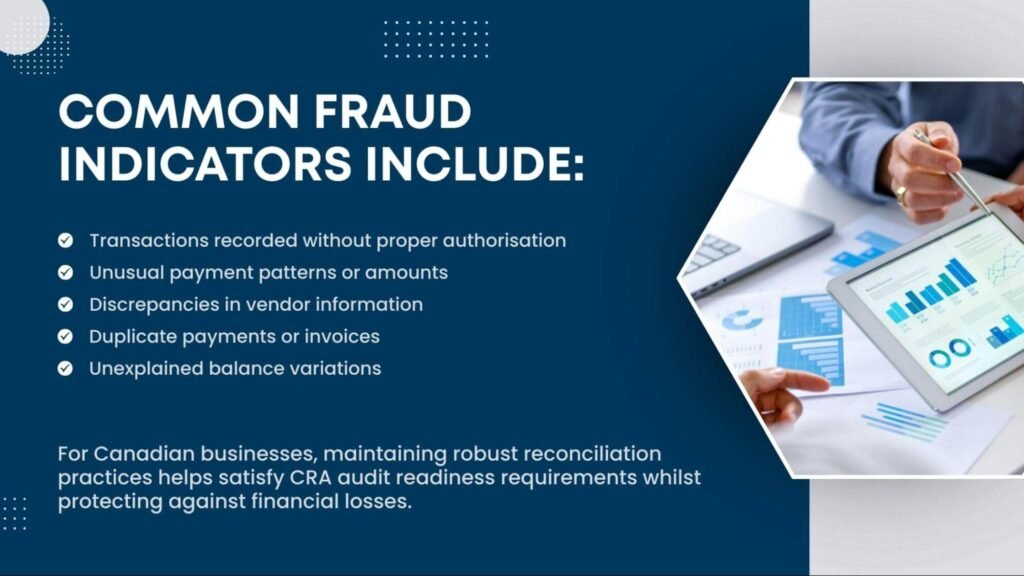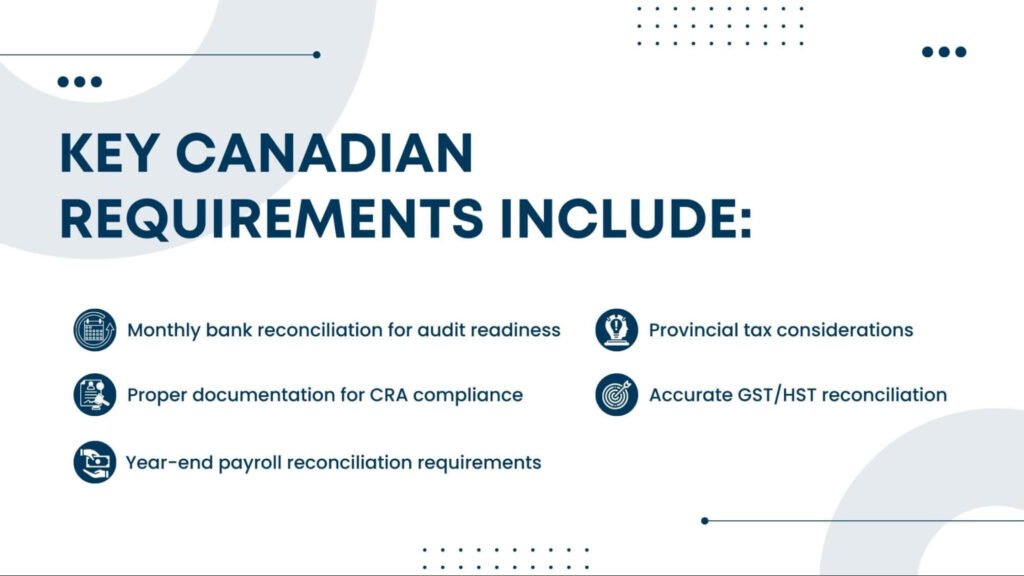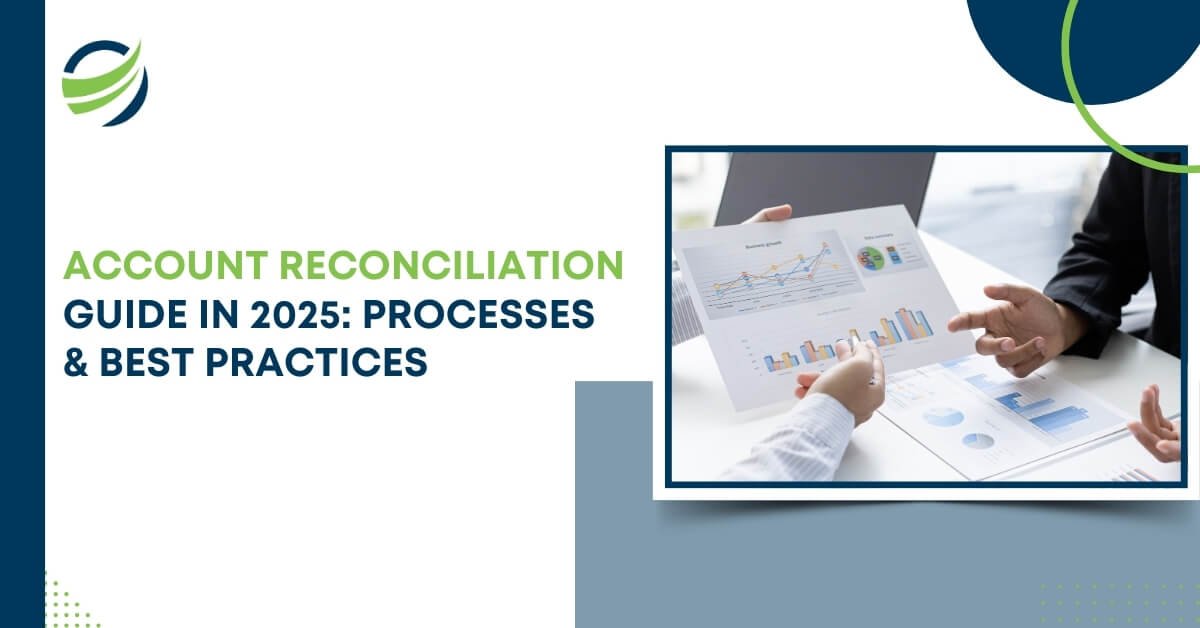Account Reconciliation Guide in 2025: Processes & Best Practices
In 2025, account reconciliation has evolved from a tedious month-end task into a strategic financial control mechanism that underpins business success.
With the global account reconciliation software market estimated to reach USD 2.44 billion in 2025 and projected to grow to USD 6.15 billion by 2032 at a compound annual growth rate of 14.1%, organisations are increasingly recognising the critical importance of this fundamental accounting process.
Key Takeaways:
Account reconciliation ensures financial accuracy by systematically comparing internal records with external sources to identify discrepancies. Modern businesses leverage automation to transform time-consuming manual processes into streamlined workflows that enhance accuracy, reduce fraud risk, and accelerate financial reporting.
With finance teams spending up to 70% of their month-end close process on manual reconciliations, automation has become essential for maintaining competitive advantage whilst strengthening internal controls.
Understanding Account Reconciliation
Account reconciliation represents the systematic comparison of financial records to verify their accuracy and completeness. This fundamental accounting process involves cross-checking internal ledger entries against external documentation such as bank statements, invoices, or subsidiary ledgers to ensure financial data integrity.
For Canadian businesses, account reconciliation plays a particularly vital role in maintaining compliance with Canada Revenue Agency (CRA) requirements. According to CPA Canada, over 70% of small businesses that reconcile bank accounts monthly experience fewer year-end reporting issues and are less likely to trigger CRA audits.
Types of Account Reconciliation
Bank Account Reconciliation
Bank account reconciliation remains the most fundamental type, comparing internal cash records with bank statements. This process helps identify outstanding cheques, deposits in transit, bank fees, and unauthorised transactions. For businesses processing high transaction volumes, bank reconciliation software can handle over 95% of routine reconciliations automatically.
Balance Sheet Account Reconciliation
Balance sheet account reconciliation verifies that asset, liability, and equity account balances in the general ledger align with supporting documentation. This comprehensive process ensures the accuracy of financial statements by validating each balance sheet component against subsidiary records or external confirmations.
General Ledger Reconciliation
General ledger reconciliation involves comparing GL account balances with subsidiary ledgers or supporting workpapers. This process ensures that all transactions are properly recorded and classified across the accounting system. Modern automated systems can integrate directly with ERP platforms to streamline this comparison process.
Accounts Payable Reconciliation
Accounts payable reconciliation matches vendor invoices with payment records and ensures all outstanding obligations are accurately reflected. This process typically involves three-way matching between purchase orders, receiving documents, and vendor invoices to prevent duplicate payments and ensure proper authorisation.
Accounts Receivable Reconciliation
Accounts receivable reconciliation verifies that customer payment records align with outstanding invoices and the AR ledger balance. With 65% of businesses spending 14 hours per week on payment collection administrative tasks, automation has become crucial for managing this process efficiently.
Payment Reconciliation
Payment reconciliation encompasses various payment matching processes, from customer payments to vendor disbursements. Automated payment reconciliation systems provide faster error and fraud detection whilst improving cash flow visibility.

The Account Reconciliation Process
Step 1: Document Gathering and Preparation
Successful reconciliation begins with comprehensive document collection. Finance teams must gather all relevant supporting documentation, including bank statements, invoices, receipts, and subsidiary ledger reports. For teams using modern reconciliation platforms, trial balances and supporting document totals auto-populate each month, eliminating manual download requirements.
Step 2: Transaction Comparison and Matching
The comparison phase involves systematically matching transactions between internal records and external sources. Automated reconciliation systems can match thousands of transactions instantly, flagging only exceptions that require human review. This approach dramatically reduces the time spent on routine matching activities.
Step 3: Discrepancy Identification and Investigation
When discrepancies emerge, finance teams must investigate their root causes. Common issues include timing differences, data entry errors, missing transactions, or potential fraud indicators. Reconciliation errors cost companies an average of $150,000 annually, making a thorough investigation essential.
Step 4: Adjusting Journal Entries
Identified discrepancies require appropriate corrective action through adjusting journal entries. These adjustments ensure that financial records accurately reflect the true financial position by correcting errors, recording omitted transactions, or addressing timing differences.
Step 5: Documentation and Review
Comprehensive documentation provides an essential audit trail whilst supporting regulatory compliance. Modern reconciliation platforms automatically store full audit trails of preparers, reviewers, comments, and actions taken, streamlining the review process and enhancing accountability.
Best Practices for Effective Account Reconciliation
Establish Standardised Procedures
Creating standardised reconciliation policies ensures consistency across the organisation. These procedures should define reconciliation frequencies, materiality thresholds, approval workflows, and documentation requirements. Clear reconciliation procedures promote consistency, minimise errors, and ensure organised execution.
Implement Risk-Based Prioritisation
Not all accounts require equal attention. Professional Accounting Services should prioritise high-risk accounts with significant transaction volumes or material balances for more frequent reconciliation. This approach optimises resource allocation whilst maintaining adequate control over critical accounts.
Segregation of Duties
Proper internal controls require separating reconciliation responsibilities from transaction recording. This segregation of duties helps prevent fraud whilst ensuring independent verification of financial data. Smaller organisations can implement supervisory reviews or automated controls to achieve similar objectives.
Regular Reconciliation Schedule
Establishing consistent reconciliation frequencies prevents discrepancies from accumulating. Monthly reconciliation is ideal for staying on top of finances and avoiding overwhelming backlogs. High-volume accounts may benefit from daily or weekly reconciliation to maintain accuracy.
Leverage Technology Solutions
Modern Financial Automation Solutions can transform reconciliation from a manual burden into a strategic advantage. Automated systems provide real-time visibility, zero-touch processes, and auditable workflows that enhance both efficiency and control.

Automation Trends in 2025
Artificial Intelligence Integration
AI-powered reconciliation tools are revolutionising financial processes through machine learning capabilities. BlackLine’s AI-powered Intercompany Predictive Guidance tool utilises machine learning to detect discrepancies and recommend corrective measures, demonstrating the growing sophistication of automated solutions.
Real-Time Processing
The shift toward real-time reconciliation is accelerating, with leading organisations moving beyond weekly reconciliation cycles. Real-time visibility enables immediate discrepancy detection and faster resolution, improving overall financial control.
Enhanced Exception Handling
Modern reconciliation platforms excel at self-healing reconciliation workflows that can achieve less than 2% unmatched transactions, even with messy data. This capability significantly reduces manual intervention requirements whilst maintaining accuracy.
Cloud-Based Solutions
Cloud adoption continues expanding, with Asia Pacific projected to exhibit the fastest growth with a CAGR of 15.87% in reconciliation software adoption. Cloud platforms offer scalability, accessibility, and integration capabilities that support global operations.
Fraud Prevention Through Reconciliation
Account reconciliation serves as a powerful fraud detection mechanism by identifying unauthorised transactions and unusual patterns. Regular reconciliation helps spot transactions that may have been processed without approval, such as unauthorised withdrawals or duplicate payments.
Common fraud indicators include:
- Transactions recorded without proper authorisation
- Unusual payment patterns or amounts
- Discrepancies in vendor information
- Duplicate payments or invoices
- Unexplained balance variations
For Canadian businesses, maintaining robust reconciliation practices helps satisfy CRA audit readiness requirements whilst protecting against financial losses.
Challenges and Solutions
Volume and Complexity Management
As transaction volumes increase, manual reconciliation becomes unsustainable. Automated solutions scale effortlessly to handle millions of transactions, making them particularly valuable for growing businesses.
Data Quality Issues
Poor data quality can undermine reconciliation effectiveness, with organisations believing it causes an average of $15 million per year in losses. Implementing data governance frameworks and validation controls helps address these challenges proactively.
System Integration
Modern businesses often use multiple financial systems that don’t communicate effectively. Enterprise Resource Planning (ERP) integration capabilities enable seamless data transfer whilst reducing manual effort.
Regulatory Compliance
Maintaining compliance with evolving regulations requires comprehensive documentation and audit trails. Automated systems provide the necessary controls whilst reducing the burden on finance teams.
Canadian-Specific Considerations
Canadian businesses must consider unique regulatory requirements when implementing reconciliation processes. The Canada Revenue Agency expects accurate records that align with bank statements, making regular reconciliation a practical necessity rather than just best practice.
Key Canadian requirements include:
- Monthly bank reconciliation for audit readiness
- Proper documentation for CRA compliance
- Accurate GST/HST reconciliation
- Provincial tax considerations
- Year-end payroll reconciliation requirements
Canadian Accounting Professionals can leverage specialised BOOKKEEPING SERVICES that understand these unique requirements whilst providing comprehensive reconciliation support.
Future Outlook
The reconciliation landscape continues evolving rapidly, driven by technological advancement and changing business requirements. Blockchain technology and open banking initiatives promise to further transform reconciliation processes by providing immutable transaction records and enhanced data sharing capabilities.
As businesses increasingly embrace digital transformation, Financial Technology Solutions will become essential for maintaining a competitive advantage while ensuring financial accuracy and compliance. Outsourcing organisations that invest in modern reconciliation capabilities position themselves for sustained success in an increasingly complex financial environment.





